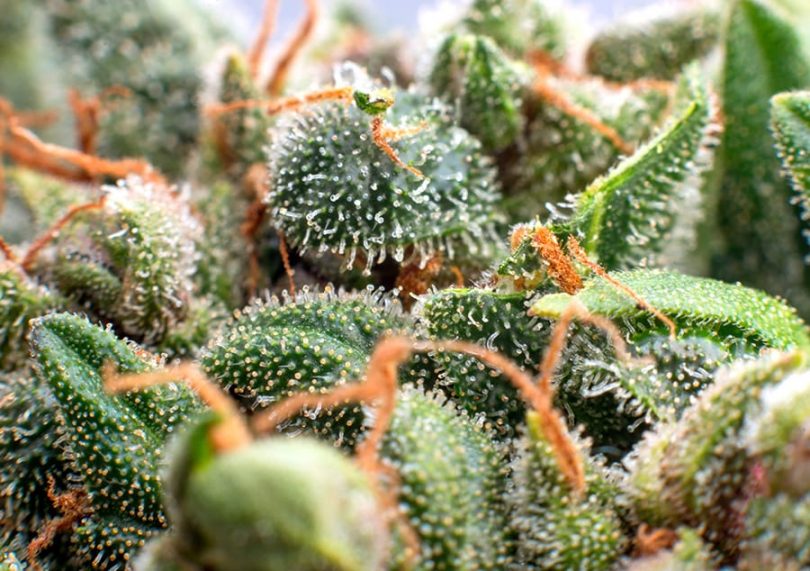Buried in the same glands that produce cannabinoids, terpenes are essential oils that flavor cannabis. They’re responsible for the fragrant, musky aroma that hits your nostrils when you crack open a thick nugget of cannabis.
Researchers have found nearly 200 distinct terpenes in Cannabis plants. They’re important because they affect the human body in a myriad of ways that are just now being understood. A lot of industry professionals believe that quality Cannabis depends just as much on its terpene profile as its THC level.
What Are Terpenes?
Terpenes are volatile, aromatic oils that produce strong effects on the body. They affect receptors and neurotransmitters in the brain, mimicking antidepressants like Prozac and Elavil.
Researchers want to determine exactly how each terpene works, and how they play off each other. Such knowledge would help treat specific illnesses. A medical patient with an autoimmune disorder might need a different strain than a migraine-sufferer.
A 2011 report published in the British Journal of Pharmacology found that the complex interaction between terpenes and cannabinoids like THC “could produce synergy with respect to treatment of pain, inflammation, depression, anxiety, addiction, epilepsy, cancer, fungal and bacterial infections.”
Industry professionals are developing ways to manipulate a mother plant’s terpene profile but more specific information is needed. THC has been subjected to intense scientific scrutiny; the cannabinoid’s relationship to terpenes has not. Research dollars, however, are finally pouring into the cannabis industry.
Common Terpenes
Myrcene: Known for its earthy smell, Myrcene-rich strains are thought to have a relaxing effect.
Limonene: This terpene produces a sweet, citrusy smell. Research indicates that it has antifungal and anti-bacterial properties. It’s also thought to help with anxiety and depression.
Caryophyllene: A spicy, pungent terpene thought to have anti-inflammatory effects. Medical researchers are deeply interested in caryophyllene because it’s able to activate cannabinoid 2 receptors (CB2) even though it’s not a cannabinoid itself.
Terpineol: A sweet-smelling terpene that people say reminds them of lime blossoms. An interesting study showed that mice pumped with terpineol saw their mobility reduced by nearly 50 percent.
Linalool: This common terpene has a smell reminiscent of spring flowers and produces a strong sedative effect. Mice dosed with linalool decreased their activity by a stunning 75 percent.
Terpene Research Today
For a long time, Cannabis producers have relied on trial and error to determine what terpene profile works with their plants. People respond differently to different to strains. You don’t have to know what linalool is to experience its calming effects. People had no idea that terpenes mattered, but they did know that a bud of citrus-sweet Lemon Haze produced a different effect than a musky Afghani breed.
Now, however, industry professionals are investing time and effort into figuring out exactly how terpenes affect the body.
Researchers are even considering if the reactions between terpenes and cannabinoids can produce effects that would be beneficial for cancer patients.
A study published by the University of Siena in Italy found that the “potential effects of terpenes on cancer, either alone or in combination with cannabinoids, have not yet been addressed in laboratory studies. Indeed, the synergistic effect between cannabinoids and terpenes is often claimed to be the major difference between ‘holistic’ herbal preparations of cannabis, and products based on single cannabinoids”.
There’s no guarantee that a certain strain will work with your body. When choosing cannabis products, find something that intrigues you. Look for a strain with an irresistible smell and an attractive terpene profile.









Hi everyone, it’s my first visit at thiis website, and post iss actually fruitful for me, keep up posting these posts.